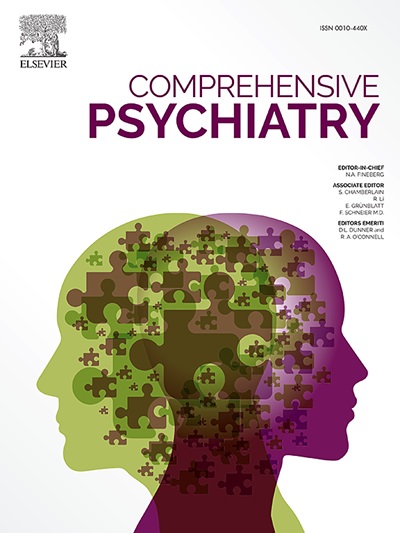An extended model of gambling motives: The first results with the long and short versions of the gambling motives questionnaire-revised
IF 4.2
2区 医学
Q1 PSYCHIATRY
引用次数: 0
Abstract
Background
Motives underlying addictions have been widely studied, using validated tools such as the Gambling Motives Questionnaire (GMQ) (Stewart and Zack, 2008). Nevertheless, subsequent studies have suggested the need to extend this model. The present paper aimed to identify potential additional factors, such as escapism, omnipotence, pleasure and financial motives, in addition to the social, enhancement and coping aspects already included.
Methods
A total of 40 motivational items (adding 25 additional items to the original GMQ items) were analysed within two datasets. Sample 1 was a player panel from a gambling service provider (N = 1829; mean age: 42.4 [SD = 13.3]; Females: 30 % [n = 548]), while Sample 2 consisted of a nationally representative sample of the Hungarian population (N = 437; mean age: 42.9 [SD = 13.55]; Females: 49.2 % [N = 215]).
Results
Exploratory Factor Analysis on Sample 1 identified four factors (including a total of 27 items): coping/escapism, social motives, enhancement/pleasure, and financial motives. The four-factor structure was confirmed on Sample 2 with confirmatory factor analysis showing adequate model fit (CFI = 0.987; TLI = 0.986; RMSEA[CI] = 0.047 [0.041–0.052]); however, high inter-factor correlations were evident in the general population sample. A shorter, 14-item version of the scale was also suggested.
Conclusions
Although the newly identified motives overlap with the original ones, the content of the factors enables the inclusion of certain aspects, like escapism within the coping factor, that proved to be the most important in relation to other potentially addictive behaviours. This suggests that examining the role of motives in gambling may be crucial in differentiating between problem gambling and recreational gambling.
赌博动机的扩展模型:第一个结果与赌博动机问卷的长和短版本-修订。
背景:使用赌博动机问卷(GMQ)等有效工具(Stewart和Zack, 2008),对成瘾的动机进行了广泛的研究。然而,随后的研究表明需要扩展这一模型。本论文旨在找出潜在的其他因素,如逃避主义,全能,快乐和经济动机,除了社会,提高和应对方面已经包括。方法:在两个数据集中,共分析了40个动机项目(在原有GMQ项目的基础上增加了25个动机项目)。样本1是来自赌博服务提供商的玩家小组(N = 1829,平均年龄:42.4 [SD = 13.3],女性:30% [N = 548]),而样本2是匈牙利人口的全国代表性样本(N = 437,平均年龄:42.9 [SD = 13.55],女性:49.2% [N = 215])。结果:对样本1进行探索性因子分析,确定了应对/逃避、社会动机、提升/愉悦和经济动机四个因素(共27个项目)。对样本2进行验证性因子分析,模型拟合良好(CFI = 0.987; TLI = 0.986; RMSEA[CI] = 0.047 [0.041 ~ 0.052]);然而,在一般人群样本中,高因素间相关性是明显的。还有人建议采用较短的14项比额表。结论:虽然新发现的动机与最初的动机重叠,但这些因素的内容使某些方面得以纳入,如逃避主义,这被证明是与其他潜在成瘾行为相关的最重要的应对因素。这表明,检查赌博动机的作用可能是区分问题赌博和娱乐赌博的关键。
本文章由计算机程序翻译,如有差异,请以英文原文为准。
求助全文
约1分钟内获得全文
求助全文
来源期刊

Comprehensive psychiatry
医学-精神病学
CiteScore
12.50
自引率
1.40%
发文量
64
审稿时长
29 days
期刊介绍:
"Comprehensive Psychiatry" is an open access, peer-reviewed journal dedicated to the field of psychiatry and mental health. Its primary mission is to share the latest advancements in knowledge to enhance patient care and deepen the understanding of mental illnesses. The journal is supported by a diverse team of international editors and peer reviewers, ensuring the publication of high-quality research with a strong focus on clinical relevance and the implications for psychopathology.
"Comprehensive Psychiatry" encourages authors to present their research in an accessible manner, facilitating engagement with clinicians, policymakers, and the broader public. By embracing an open access policy, the journal aims to maximize the global impact of its content, making it readily available to a wide audience and fostering scientific collaboration and public awareness beyond the traditional academic community. This approach is designed to promote a more inclusive and informed dialogue on mental health, contributing to the overall progress in the field.
 求助内容:
求助内容: 应助结果提醒方式:
应助结果提醒方式:


